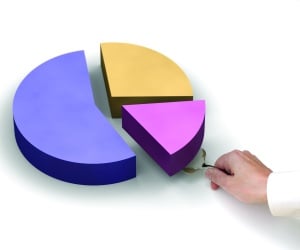Non-major share of the residential mortgage market has continued to increase, breaking above 35% for the very first time.
These figures come from the latest
Australian Finance Group (AFG) Mortgage Index which looked at the final quarter of the 2016/17 financial year.
Non-major share stood at 35.2% in the fourth quarter, up from 34.4% in the previous quarter and from 29.1% the year before.
“Significant structural change to the lending market brought about by tighter lending rules has seen increased flows of business to the non-major lenders,” AFG CEO
David Bailey said.
“As the majors re-price their mortgages and change lending policies to meet regulatory caps, consumers are turning to mortgage brokers to get a full picture of the choices on offer in such a competitive market.”
Non-majors are filling the void left by some major banks, he said, with brokers helping consumers find a loan through lenders without a branch network.
Rate rises and policy changes have also had an impact, he added.
Overall quarterly loan figures for investors, first home buyers, etc from AFG’s data are found below:
| |
Q4 2016/17 |
Q3 2016/17 |
Q4 2015/16 |
| Loans settled |
30,101 |
28,637 |
30,371 |
| Average loan size |
$484,295 |
$486,811 |
$477,207 |
| Investors |
31% |
32% |
34% |
| First home buyers |
10% |
10% |
7% |
| Refinancers |
29% |
35% |
39% |
| Upgraders |
39% |
34% |
32% |
“In what will no doubt be welcome news for the regulator, investment lending has dropped to 31% of our total lending for the quarter as lenders continue to tighten their criteria,” Bailey said.
Refinancing fell from 35% to 29% from the third to the fourth quarter in the 2016/17 financial year as interest-only or high-LVR options decrease. Lender policy restrictions have also seen the average loan size drop in every state except Queensland.
“The part of the market that has been virtually untouched by regulators and lenders is the principle and interest owner category. As a result, those opting to upgrade their homes have increased from 34% to 39% in response to some attractive lending offers,” Bailey said.
Looking at type of loans and comparing majors versus non-majors, AFG compiled the following figures for the final quarter.
| |
Total |
Investor |
FHB |
Refinance |
Upgrader |
| Majors |
64.8% |
68.7% |
70.1% |
57.6% |
65.9% |
| Non-majors |
35.2% |
31.3% |
29.9% |
42.4% |
34.1% |
Non-majors were the clear winner in refinancing, attracting more than 40% of the market share from the major banks.
The number of borrowers choosing to fix their rates has also increased dramatically from 18.0% to 23.7% between the third and the final quarter of the 2016/17 financial year. Those opting for a standard variable rate dropped slightly from 66.2% to 64.2% in the same time period.
Finally, looking state-by-state, AFG found the average loan sizes and LVRs as follows in the fourth quarter.
| |
Average loan size |
Average LVR |
| National |
$484,295 |
67.7% |
| New South Wales |
$595,106 |
63.6% |
| Victoria |
$473,629 |
70.7% |
| Queensland |
$408,537 |
68.0% |
| South Australia |
$377,160 |
70.2% |
| Western Australia |
$432,569 |
69.7% |
| Northern Territory |
$400,847 |
64.0% |
Related stories:
Home loan demand on the rebound
Variable rate demand back on the rise
Regulatory limits hitting home buyers hard


